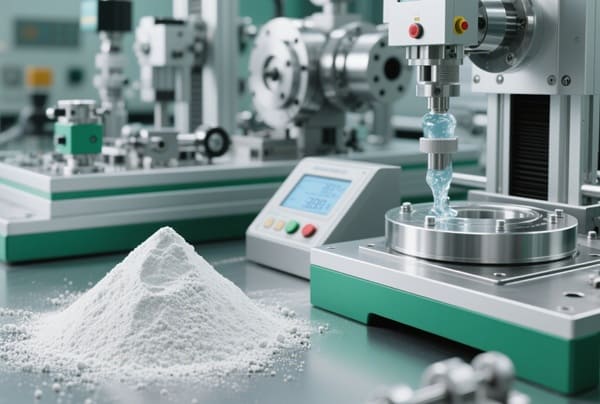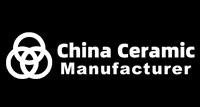How Does Particle Size Affect Aluminum Oxide Powder Properties?
Aluminum oxide (Al₂O₃) powder is a fundamental material in many industrial sectors, including ceramics, electronics, and magnet manufacturing. The particle size of aluminum oxide powder plays a crucial role in determining its physical and chemical properties, affecting everything from flowability and packing density to sintering behavior and mechanical strength. Understanding how particle size influences these properties is key to optimizing processing techniques and ensuring high-quality end products. This article explores the multifaceted impact of particle size on aluminum oxide powder, supported by scientific data and comparisons, aiming to provide valuable insights for manufacturers and engineers in the magnetic materials field.
At China Ceramic Manufacturer, we specialize in high-quality aluminum oxide powder, ensuring optimal performance for industrial and scientific applications.

What Is Aluminum Oxide Powder?
Aluminum oxide powder, often called alumina, is a highly stable ceramic material known for its hardness, chemical inertness, and thermal resistance. It is produced through various processes to achieve different particle sizes and shapes, tailored for specific applications like abrasives, coatings, or substrates. Understanding particle size distribution is key to optimizing powder performance and end-product quality.
| Property | Description |
| Chemical Formula | Al₂O₃ |
| Appearance | White powder |
| Hardness | Mohs 9 |
| Thermal Stability | Up to 2000°C |
| Common Applications | Ceramics, abrasives, electronics |
Particle size is a defining characteristic that influences many other material properties, including surface area, packing density, and sintering behavior.
Explore our high-quality aluminum oxide powder.
Why Does Particle Size Matter in Aluminum Oxide Powders?
Particle size affects how powders flow, compact, and react during sintering or coating. Smaller particles have a larger surface area relative to volume, leading to higher reactivity and densification rates, but may also cause agglomeration or poor flowability. Larger particles generally improve flow but may limit sintering efficiency and final material density.
| Particle Size Range (μm) | Effect on Properties |
| <0.1 | High surface energy, prone to agglomeration |
| 0.1 – 1 | Balanced reactivity and flow |
| >1 | Good flow, slower sintering |
Selecting the optimal particle size depends on balancing these factors for the intended manufacturing process and product requirements.
How Is Aluminum Oxide Powder Particle Size Controlled?
Particle size control is achieved through various synthesis and milling techniques. Methods include precipitation, sol-gel processing, spray pyrolysis, and mechanical milling, each offering different control levels over size distribution, shape, and purity. Post-processing steps like classification and sieving further refine particle size.
| Method | Size Control | Advantages | Limitations |
| Precipitation | Nano to micron | Good uniformity | Complex processing |
| Mechanical Milling | Micron to sub-micron | Cost-effective, scalable | Possible contamination |
| Sol-Gel | Nano-scale | High purity and control | Time-consuming |
| Spray Pyrolysis | Sub-micron | Good for spherical particles | Equipment intensive |
Fine-tuning these techniques allows manufacturers to produce powders tailored for specific applications, influencing performance downstream.
What Are the Effects of Particle Size on Powder Flow and Packing?
The ability of powder to flow smoothly and pack densely is critical in shaping processes like pressing and extrusion. Smaller particles may hinder flow due to cohesion but allow tighter packing, enhancing green body strength. Larger particles improve flowability but may reduce packing density and increase porosity in sintered parts.
| Particle Size (μm) | Flowability | Packing Density (%) |
| <0.5 | Poor | 55-65 |
| 0.5 – 5 | Moderate | 60-75 |
| >5 | Good | 50-60 |
Optimizing particle size distribution helps balance flow and packing, directly affecting final component integrity.
How Does Particle Size Influence Sintering Behavior?
During sintering, particles bond and densify under heat. Smaller particles sinter at lower temperatures due to higher surface energy, promoting faster densification and finer grain size. However, extremely fine powders may lead to abnormal grain growth or shrinkage anisotropy.
| Particle Size (μm) | Sintering Temperature (°C) | Grain Size After Sintering (μm) |
| <0.1 | 1200-1300 | <1 |
| 0.1 – 1 | 1300-1400 | 1-5 |
| >1 | 1400-1600 | >5 |
Control over particle size thus enables manufacturers to tailor microstructure and mechanical properties in alumina ceramics.
How Does Particle Size Affect Mechanical Properties?
The mechanical strength, hardness, and toughness of alumina ceramics depend largely on grain size, which is influenced by initial powder particle size. Fine powders typically produce ceramics with higher strength and hardness due to reduced porosity and finer grain structures. However, too fine particles may cause processing challenges.
| Particle Size (μm) | Hardness (GPa) | Flexural Strength (MPa) |
| <0.1 | 18-20 | 350-400 |
| 0.1 – 1 | 15-18 | 300-350 |
| >1 | 13-15 | 250-300 |
Thus, selecting the right particle size is a balancing act between processability and final mechanical performance.
How Does Particle Size Influence Thermal Properties?
Thermal conductivity and thermal shock resistance are vital for many alumina applications. Smaller particle-derived ceramics can have reduced thermal conductivity due to increased grain boundary scattering, but often show improved thermal shock resistance due to finer grain structures.
| Particle Size (μm) | Thermal Conductivity (W/m·K) | Thermal Shock Resistance (°C) |
| <0.1 | 20-25 | 250-300 |
| 0.1 – 1 | 25-30 | 200-250 |
| >1 | 30-35 | 150-200 |
Choosing powders based on particle size allows tailoring thermal performance for specific operational environments.
How Does Particle Size Compare Between Aluminum Oxide and Other Ceramic Powders?
Aluminum oxide powders are just one type of ceramic powder widely used in advanced materials. When comparing them with other ceramics such as zirconia, silicon carbide, boron nitride, and silicon nitride, it becomes clear that particle size ranges and their effects on material properties vary significantly. These differences are influenced by the unique crystal structures, bonding, and intended applications of each ceramic. Understanding this helps in selecting the right powder characteristics to optimize performance in different industrial contexts.
| Material | Typical Particle Size (μm) | Key Property Impact | Common Applications |
| Aluminum Oxide | 0.1 – 5 | Strength, sintering behavior | Structural ceramics, abrasives, substrates |
| Zirconia | 0.05 – 1 | Toughness, phase transformation behavior | Dental ceramics, thermal barrier coatings |
| Silicon Carbide | 1 – 10 | Wear resistance, thermal stability | Cutting tools, armor, heat exchangers |
| Boron Nitride | 0.2 – 5 | Lubrication, thermal conductivity | High-temp insulators, lubricants |
| Silicon Nitride | 0.1 – 3 | Mechanical strength, fracture toughness | Bearings, engine parts, electronics |
| Titanium Dioxide | 0.05 – 1 | Optical properties, photocatalytic activity | Pigments, sensors, photocatalysts |
| Alumina-Zirconia Composite | 0.1 – 3 | Enhanced toughness and strength | Structural and biomedical ceramics |
This table highlights that ceramics like zirconia and titanium dioxide tend to use finer powders, often at nanoscale or submicron levels, to exploit specific phase transformations or surface effects. Silicon carbide typically has coarser particles to maximize wear resistance and thermal conductivity. Meanwhile, composites like alumina-zirconia blend powder sizes to combine the best properties of each component.
Choosing an appropriate particle size distribution tailored to the specific ceramic and application is essential to ensure optimal manufacturing efficiency and material performance.
Request a custom quote for aluminum oxide powder.
How to Choose Particle Size for Aluminum Oxide Powders?
Choosing the right particle size is essential to balance processability and final ceramic properties. Smaller particles improve sintering and density but may cause poor flowability. Larger particles flow better and cost less, but require higher sintering temperatures and yield rougher surfaces.
| Application | Particle Size (μm) | Key Benefit |
| High-density ceramics | 0.1 – 0.5 | Better sintering and strength |
| Wear-resistant parts | 0.5 – 2.0 | Durability and balanced properties |
| Thermal insulation | 2.0 – 5.0 | Improved shock resistance |
Selecting particle size depends on your specific application and processing method. China Ceramic Manufacturer offers a broad range of powders with controlled particle sizes to meet diverse manufacturing needs.
What Are Future Trends in Aluminum Oxide Powder Particle Size Control?
Technological advances are pushing the boundaries of powder engineering. Nanoparticle synthesis, advanced milling, and real-time size monitoring are improving consistency and performance. Surface modification of powders is emerging to enhance dispersion and sintering behavior.
| Trend | Description | Benefit |
| Nanoparticle Production | Controlled synthesis of ultra-fine powders | Enhanced mechanical properties |
| In-situ Particle Monitoring | Real-time size measurement | Better process control |
| Surface Functionalization | Coatings to improve flow and sintering | Reduced agglomeration |
| Hybrid Milling Techniques | Combining mechanical and chemical milling | More uniform size distribution |
Adoption of these trends promises improved alumina powder quality and downstream performance.
FAQ
| Question | Answer |
| Typically, 0.1 – 1 μm balances densification and handling. | Not always; very fine powders may cause processing issues like agglomeration. |
| How does particle size affect powder cost? | Finer powders usually cost more due to complex processing and handling. |
| Can particle size be changed after powder production? | Yes, via classification, milling, or sieving. |
| What is the best particle size range for ceramic sintering? | Typically 0.1 – 1 μm balances densification and handling. |
| Does particle shape matter as much as size? | Yes, shape influences packing and flow significantly. |
Conclusion
Particle size plays a crucial role in determining the overall quality and performance of aluminum oxide powders. Precise control over particle size and distribution directly impacts sintering behavior, mechanical strength, and thermal stability of alumina ceramics. China Ceramic Manufacturer continuously drives innovation in powder engineering, delivering powders with consistent properties that meet the stringent demands of modern industries such as electronics, aerospace, and energy. As technological requirements evolve, ongoing advancements at China Ceramic Manufacturer will remain vital in pushing the boundaries of alumina material performance, ensuring reliable solutions for the future.
Looking for high-quality aluminum oxide powder? Contact us today!
